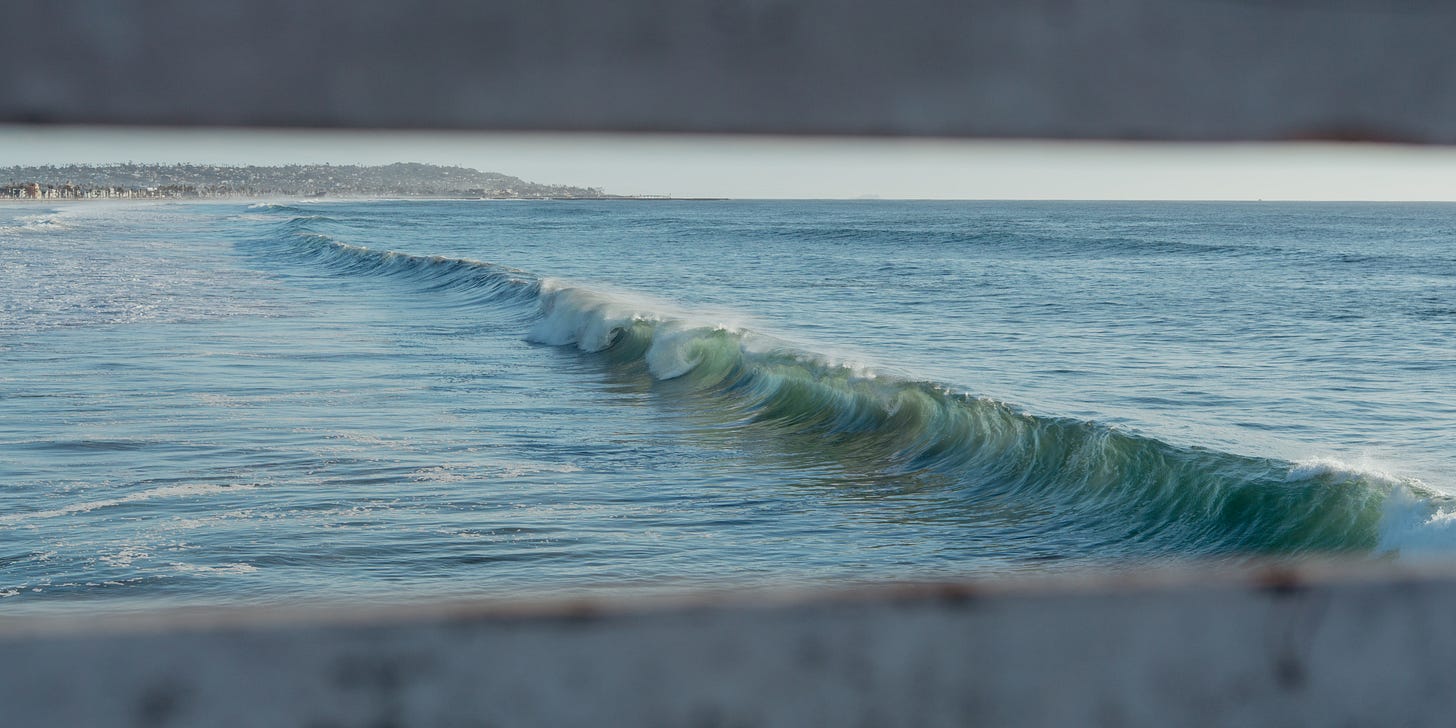Where does wave energy go?
The waves we surf come from near and far, generated by winds pulling at the water's surface. After marching their way to a coastline, they break. But then what?
Anyone who has missed a duck dive can tell you that waves are energetic. To our best understanding, energy in a system is conserved, so it must be going somewhere. But where does it go?
The answer is that it goes many places. Breaking waves transform their energy into mixing water masses, generating sound, creating heat, lifting sediment, launching spray skyward, and driving coastal currents.

Starting small, waves do create heat by causing molecules to vibrate as they break, but the amount of energy dissipated this way isn't that large. If it were, wetsuits wouldn't be needed. For those who will argue the water is warmer right at the edge compared to deeper zones, chalk that up to the sun heating a smaller volume of water in the shallows rather than wave energy conversion.
The sound of waves, successfully commercialized in devices meant to help people with too much on their mind sleep, represents another avenue of energy dissipation. The crashing of waves, the roil of whitewater, and the dragging of sand and rocks along the bottom all cause vibrations in the air, water, and earth. These acoustic waves carry energy away from the break zone.
Sea spray provides another pathway for waves to spread out their energy. It takes work to throw small groups of water particles into the air, fighting against gravity with each droplet launched off the lip. Although this seems small compared to the massive volume of water in the wave itself, the effect of this air-sea interaction on coastal ecosystems receives increasing attention from researchers.
Sediment resuspension, basically the fact that fast-moving water picks up sand due to shear forces, consumes another portion of the wave's energy. This matters to surfers primarily for water quality, but sediment mobilization is also what moves sandbars around. Large waves tend to scrape sand from the beach and nearshore zones while small waves tend to deposit material back.
Now to the heavyweight energy consumers - current generation and mixing. It takes enormous amounts of energy to mix water. Think about the last time you used a whisk to mix up a small bowl of something, then try to imagine doing that to the ocean you can see from the beach. Water layers of different temperatures and salinities resist combining, much like oil and vinegar in a salad dressing. Breaking waves provide the mechanical energy needed to blend these layers, creating turbulent mixing zones.
Current generation represents another major energy drain. Breaking waves create complex circulation patterns that drive longshore currents, rip currents, and undertows. Moving these water masses against friction and gravity demands substantial energy input. The familiar rip current that provides a dry-haired paddle out is basically a form of recycled energy from breaking waves.

The efficiency of these energy transfer processes varies dramatically with wave size, bottom topography, and water depth. Small waves on gentle slopes dissipate energy gradually across wide surf zones (think of Queen’s in Waikiki), while large waves hitting steep reefs transfer most of their energy in violent, concentrated bursts (we all know Teahupo'o). This explains why some breaks feel powerful enough to hold you down for what seems like geological time periods, while others roll harmlessly overhead.
Different surf spots behave so differently under similar wave conditions precisely because of how they distribute this energy. A reef break that focuses wave energy into narrow zones creates dramatically different dynamics than a beach break that spreads the same energy across hundreds of meters of coastline.
That set rolling through gets its energy methodically distributed across heat, sound, currents, mixing, and coastal reshaping. Each process claims its share until there's nothing left of each and every wave, all day and all night.
Further Reading:

